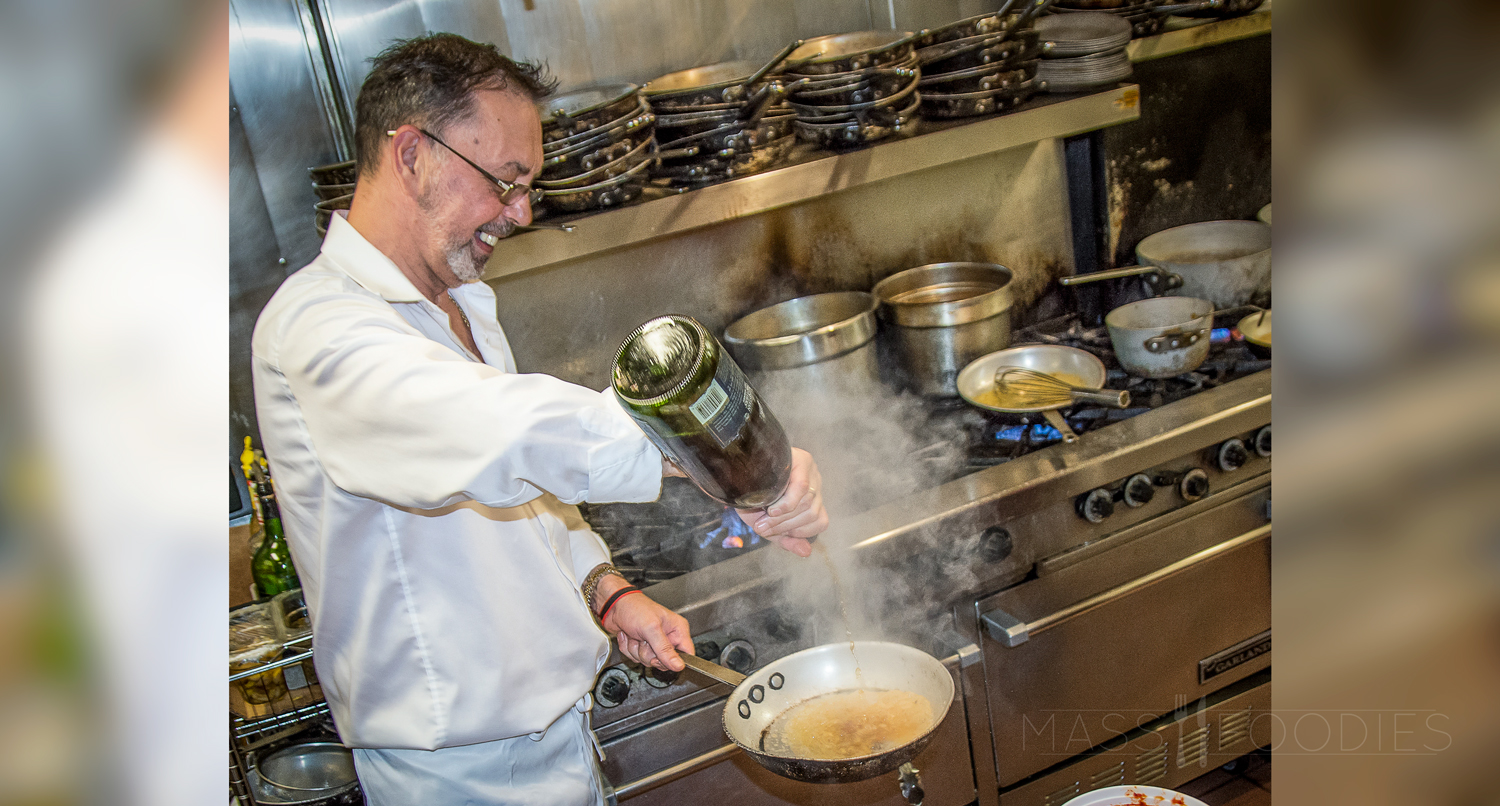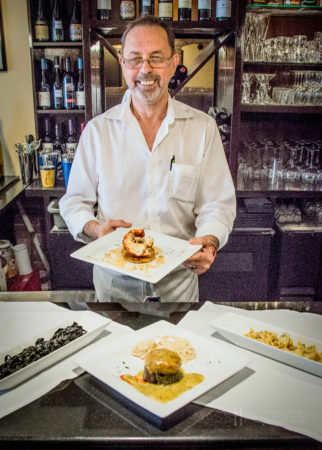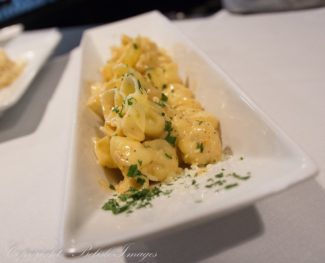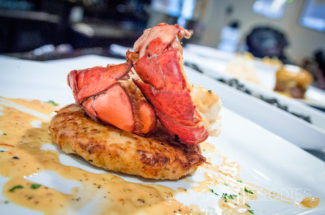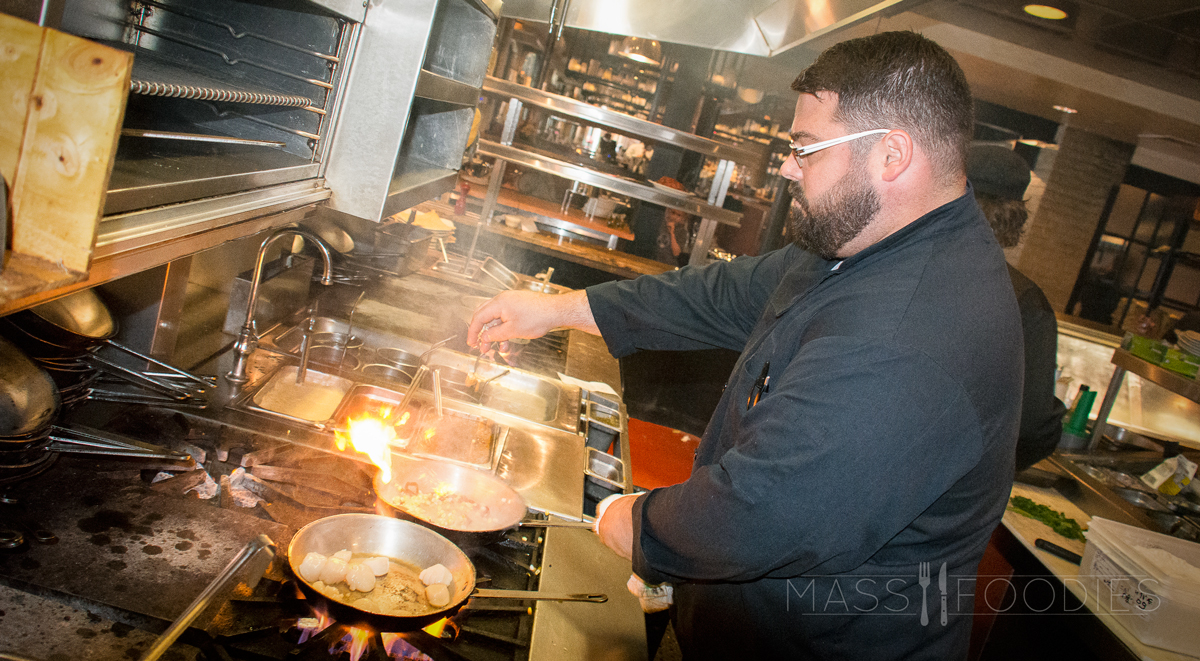
Mark Hawley loves getting his butt kicked.
“That’s what drives me,” he says. “I love sports. I love working. And I love what I do. The adrenaline rush of a busy night is enjoyable. I like that challenge. It’s me saying, ‘You cannot beat me. I will be better than you.’”
Mark has had plenty of opportunities to prove his mettle in the weeds of kitchens in and around Worcester. He was the first chef at the ever-busy Flying Rhino, headed the line at 111 Chop House, and was the top guy at the bustling VIA Italian Table for the last three-plus years.
But now Mark Hawley faces a very different challenge – and his biggest yet. He’ll have three kitchens trying to kick his ass this fall when he officially takes over as corporate executive chef for the Worcester Restaurant Group’s (WRG) three restaurants: VIA Italian Table, 111 Chop House, and the Sole Proprietor.
Mark relishes the challenge.
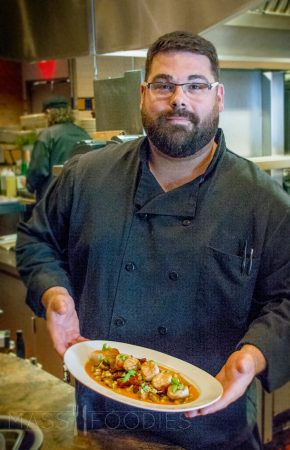
“I don’t know if it’s just me getting older or having kids now but I really enjoy managing people. I like the different personalities – from one kitchen to the next it is completely different. But it’s familiar to me too. Besides having already worked at two of the restaurants most everyone knows me, and I go to The Sole every morning to pick up fish so I see the guys in the kitchen there. It is very different than having someone new off the streets come and do it.”
And there are plenty of new people on those Worcester streets these days. In the nearly twenty years Mark has boomeranged between some of Shrewsbury Street’s most established eateries, the Worcester food, restaurant, and chef scene has blown up around him. It can be hard to keep track of the next “It” place. By contrast, VIA, the newest jewel in the WRG crown, opened nearly a decade ago. 111 Chop House is coming up on two decades. And the remarkable Sole Proprietor has been making sure something fishy happens on Highland Street for more than 35 years. Three very different restaurants – a fact that makes Mark’s job even more complicated and delicious.
“These are restaurants each with very different identities. No one would necessarily think that the three were related. Does that present an extra challenge? Yes and no. For me it is still food at the end of the day. Now the food is very different and the people are very different but I enjoy it because I get to cook a lot more stuff.” He’ll also let the chefs at each of the restaurants have their own voices, guiding them and coaching them. “Before it was more or less 100% of my work,” Mark added. “Now it will be more of a share.” (Customers have already seen a smaller version of that sharing in action at VIA: The summer’s Pig Roast was an idea that came up in a chef meeting and then was executed by Mark, who noted to my delight that the chicharrones are back on the menu now.)
In fact, VIA has always been a bit of a laboratory and food playground for Mark – a place with seasonal and varied menus and open to new ideas. He agrees with the perception that Chop House and The Sole are more fixed in their approaches, menus, and customers. “They are very much the same and that’s what customers expect. I have the same perception!” he adds. “We do a very good job at all three restaurants, but people have liked and expected X, Y, and Z at The Sole for 35 years.”
So how do you change that – develop new foods and thoughts and ideas and get the new and next generation of people in and still keep the current customers happy? All three WRG restaurants have survived and thrived but times have changed. There is perhaps no greater challenge for an established restaurant anywhere, especially when faced with the rush of the new: keep attracting customers with something fresh and current while keeping the one’s who got you there satisfied.
Mark agrees this is his biggest challenge and what he is most focused on with new ideas and dishes: “In the end,” Mark says, “it’s still all about educating customers. The Sole and the other restaurants need nothing when it comes to quality. We buy the best product we can and serve the best quality food with the best service at the best rate possible. The Sole serves the best fish money can buy. I want to update everything that comes with that fish right down to the plate it is served on.”
Meaning?
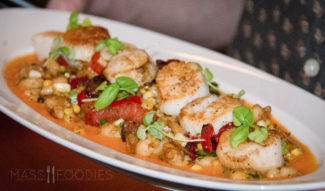
“For me my goal is to give The Sole a little more ‘composure,’ meaning composed dishes. I just want to put together dishes that they are going to enjoy. But for The Sole it will still be clean and simple but elevated – maybe start with a side they haven’t heard of or tried before. If squash is in season, there’s no need to do the same thing over and over. Maybe we ferment it or pickle it or puree it or roast it. We can change it up.”
As example of “composure on a plate,” Mark shows me a seared scallop dish he created for VIA served on a bed of seasonal succotash with a house-smoked tomato vinaigrette. There’s bacon, corn. pickled Fresno chilies. fava beans … it’s colorful, seasonal, fresh, and not so unfamiliar that it wouldn’t appeal to multiple generations.
“My personal challenge has always been to do new things with food,” adds Mark. “I keep playing with my food. I like salt and sweet and sour. I like pickling things and different textures. There is always some sort of crunch and heat. I like big and strong flavors. I like to mix and match very prominent flavors that together create something fantastic.”
Which is good because that’s what Mark knows customers are increasingly looking for: “The food bar has been set higher than it ever has. People are able to see all these cool concepts on TV and social media and they want it. They need to find it here. Everybody has to up their games. We have to keep giving people something that they can’t make it home. That they haven’t seen before. We have to strive to be a little more cutting-edge. We can’t just give them the same old food. Which is great for me. I took over the Rhino when I was 19 years old. I’ve always been on my own. I’ve always been teaching myself and learning new things.”
Which is why the arrival of the new restaurants makes Mark happy too. It means more people coming to Worcester to eat. It means everyone right down to his employees need to be better, not scared. “I love these new restaurants popping up,” he adds “deadhorse hill and Lock 50 and others? It’s fantastic. Why should you have to drive to Providence? Why should you have to drive to Boston?”
And if anyone has any doubt that he understands what he needs to do in the future, Mark may have the perfect personal story capturing how he reconciles transformation and continuity without getting his butt kicked: He has two boys, five and three, and they eat everything, including those scallops and (without any cajoling) broccoli. But when they come into VIA? “They go straight for the gelato.”
The more things change . . .

